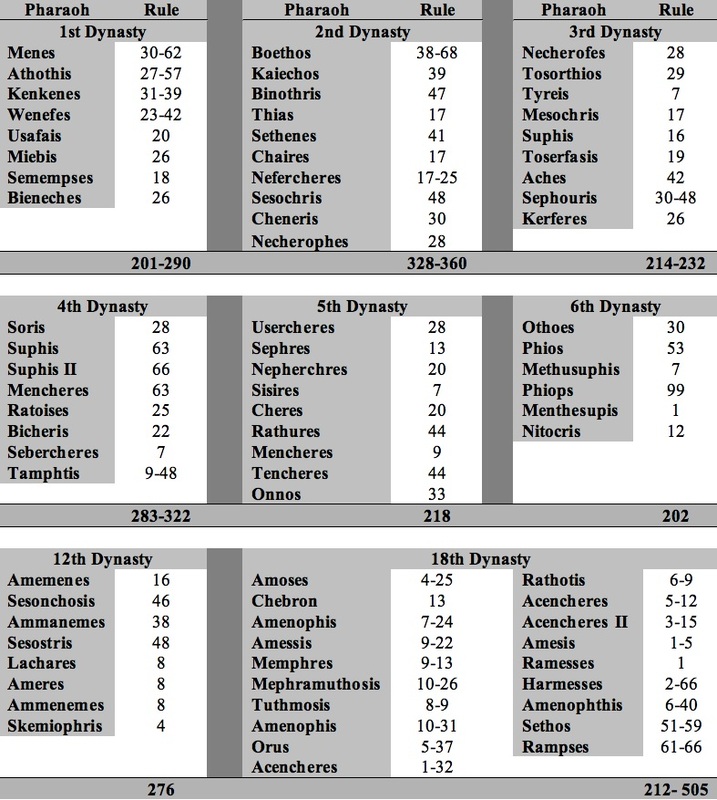Technically Egyptology is not the sole ancient culture to review. The Sumerians are believed to have predated the Egyptians. The difference is that we have no evidence about the ancient Sumerians other than pottery, building materials, and the tales of Gilgamesh. The hard objects we can try to date through analyzing the decay of various chemicals and ions. The proponents of this method of dating recognize the limitations of these dating procedures. Most will admit that the further back the dating process goes, the less accurate it becomes. Past a few thousand years, the variables become so unpredictable, that we must caution taking those dates as reliable by themselves. By cross-referencing contemporary data, ancient objects within a few thousand years from the present can be validated. The ancient Sumerian and Egyptian artifacts must have proven timeframes with which to cross reference. If scientific dating processes are the sole understanding for the timeframes past a few thousand years, we should be willing to let these dates be fluid.
The tales of Gilgamesh were written (supposedly) around the time of Abraham. The historical data within it mirrors stories from Genesis. Its writing style is designed as an epic rather than history. The Jewish Torah has a very different historical focus and literary style. Genesis intends to establish events and peoples who had direct impact on current readers. The Epic of Gilgamesh, unfortunately, is not able to identify dates or verified timelines. Its use for dating is at a stand still.
We arrive, then, at the data of the Egyptians. The ancient Egyptians can be commended for many written advancements. There are two primary sources that record their ancient history. One is written carvings found archeologically, the other is preserved writings. Examples of these are the Palermo Stone, the Turin Kinglist and the writings of Manetho. The early Egyptian framework we owe to Manetho, a third century priest. Manetho was charged by Ptollomy II to reconstruct a history of Egyptian rulers. Like most other ancient documents, we do not have the original. We have most of his work preserved by key historians like Josephus, Africanus, and Eusebius. His list is sumarized below.

The apparent meaning is that the periods of the first six dynasties range from 1446-2405 years. Since there is no 20th century dating procedures in place, Manetho’s list is accompanied with a theory to establish solid dates. Using this list as a rough structure guide, Egyptologists have reconstructed all 18+ (many more) dynasties from archeology. The result is a list of kings/pharaohs by dynasty and length of reign that stretch back past 3000 BC. Many egyptologists will admit that these dates are fluid. Currently, fewer Egyptologiests hold to Manetho’s dates as canon. Instead, they use various similar documents. Legitimate debates exist trying to place together our fragmented data into a proper western context.
Portions of these lists are verified by archeological findings which retain ruler lists that overlap. These archeological findings by themselves cannot establish precise dates, but can give credence to ruler order and historical presence. Lists within archeology and documentation have similar characteristics to Manetho’s list. Most things that are said about Manetho’s list can be said of the rest of ancient lists. The academic world has agreed upon an Egyptian timeline which was first based from Manetho’s lists and then from archeological findings which cross-reference or clarify these periods. Before 3000ish BC we have no documentation other than scripture. So, past these lists and the artifacts that collaborate with them, we are at the limitations of scientific dating.


